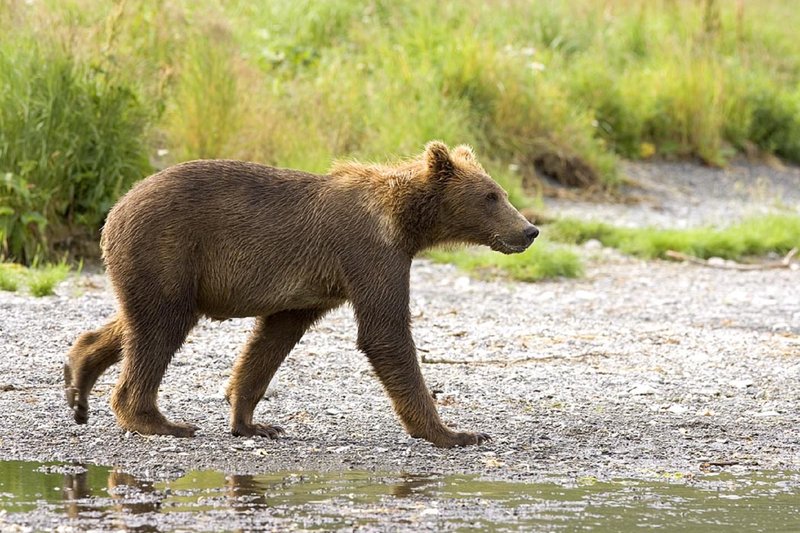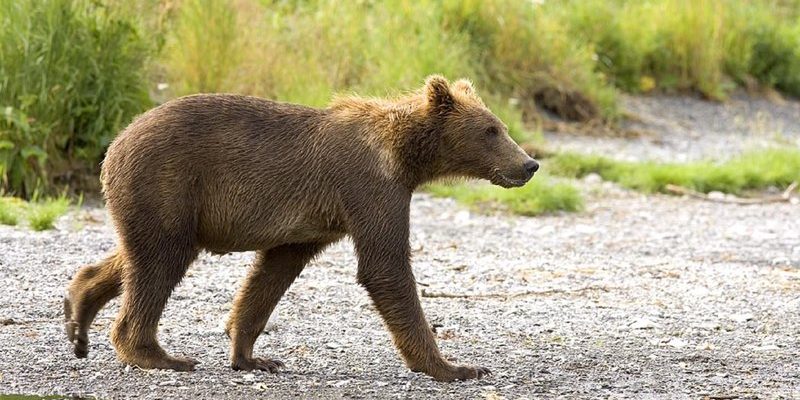
In the wild, the bond between a mother grizzly and her cubs is one of the strongest in nature. The nurturing relationship lasts for a few years, during which the mother teaches her young everything they need to survive. From hunting for food to recognizing potential threats, grizzly bear cubs have a lot to learn, and their mother is right there by their side. So, let’s dive into the world of grizzly bear parenting and discover how these magnificent creatures raise their young.
The Beginning: Grizzly Bear Gestation and Birth
The journey of a grizzly bear mother starts long before the cubs are born. After mating in late spring to early summer, female grizzlies experience a unique reproductive process called *delayed implantation*. This means that after the fertilized egg forms, it doesn’t implant immediately. Instead, it floats around in the mother’s womb for a few months. This clever adaptation allows the bear to time the birth of her cubs to coincide with the availability of food—springtime when food is plentiful.
When winter rolls around, the mother grizzly finds a cozy den, often dug into a hillside, to give birth. During this time, she goes into a deep hibernation, decreasing her metabolism and conserving energy. In January or February, the magic happens: she gives birth to a litter of one to four cubs, usually two. These tiny cubs weigh about a pound at birth and are completely helpless. Picture a baby with its eyes shut, relying entirely on its mother for warmth, food, and protection—that’s precisely the early life of a grizzly cub.
The First Weeks
In those first weeks, the mother is constantly vigilant. She feeds her cubs with her nutrient-rich milk, which helps them gain weight quickly. You might be wondering how she does this while hibernating. The mother’s body is a fascinating machine. Even while in a dormant state, she produces milk, allowing her cubs to thrive. This early bonding time is critical; the cubs are forming essential attachments that will shape their behavior and survival skills.
With the arrival of spring and food sources opening up, the mother starts waking up more frequently, bringing her cubs with her. The world opens up for these little ones as they venture outside the den for the first time. Imagine their first breaths of fresh air and gentle sunlight touching their fur. This new phase is filled with curiosity and learning about their surroundings.
First Steps: Learning to Explore
As the cubs grow stronger, their mother encourages them to explore their surroundings. During this phase, they learn to walk and even run. Watching them stumble and trip is a heartwarming sight. You can almost picture them as toddlers, taking those first wobbly steps. The mother bear stays close, using her body to guide and protect them from any potential dangers.
Grizzly cubs are naturally curious and start to explore their environment. They play with each other, rolling around in the grass or wrestling. This play isn’t just for fun—it’s crucial for developing their physical skills and social behaviors. The mother occasionally shows them how to forage for food, sniffing around bushes and digging for roots. Here’s the thing: these playful interactions help build confidence, allowing the cubs to understand their boundaries and what it means to be a bear in the wild.
Foraging and Hunting Skills
Once the cubs reach about six months of age, their mother begins to teach them essential survival skills. This includes foraging for berries, nuts, and roots, which are vital during the summer months. You might think of it as an outdoor classroom where lessons on the best food sources unfold. The mother grizzly demonstrates how to find food and encourages the cubs to practice. They watch closely as she skillfully digs up roots or strips bark from trees.
Hunting is another crucial skill they must learn. While the mother usually catches fish or small animals on her own, she introduces her cubs to this practice by allowing them to observe. Watching her catch salmon is an incredible experience for the cubs, who are eager to learn. The mother might also bring them along on short trips to feed, subtly teaching them how to use their powerful claws and sense of smell.
Facing Challenges: Threats in The Wild
Raising cubs in the wild isn’t without its dangers. Grizzly mother bears face threats from other wildlife, including male bears that could see the cubs as competition or even a meal. The mother bear is fiercely protective, using her strength and size to guard her young. Imagine a lioness defending her cubs from a lurking predator—that’s the intensity a mother grizzly displays.
Moreover, human impacts can add stress to their environment. Habitat loss and vehicle traffic can threaten the bear’s territory. This is a significant concern, as finding food and a safe space for her cubs becomes more challenging. The mother must adapt her behaviors to keep her family safe, often leading them farther into remote areas.
The Bond: Learning from Their Mother
Over the next few years, the bond between a mother grizzly and her cubs deepens. The cubs learn to communicate using various sounds, imitating their mother’s growls and grunts. This form of *bear language* helps them understand what she wants or how to react in different situations. The mother bear’s patience is remarkable, allowing her cubs to test their limits while keeping them close.
As they learn, they also build their personalities. Some may be more adventurous, while others might be cautious. The mother’s guidance helps to shape these traits. You could think of it like a nurturing teacher who encourages each student to shine in their unique way. Throughout this period, the cubs bond with their mother, a relationship that will significantly influence their future behaviors in the wild.
Independence: Preparing for Life on Their Own
By the time the cubs are about two years old, it’s time for them to become more independent. The mother bear has taught them a wealth of survival skills, but now they must start to test their wings—or paws, in this case. She gradually encourages them to explore further away. Imagine a parent watching their child leave for college; there’s pride mixed with a little heartache knowing they must let them go.
During this phase, cubs often stay close to their mother for safety but learn to forage and hunt on their own. The mother might lead them to prime fishing spots or berry patches, allowing them to step forward and try solo foraging. This transition is crucial as they prepare for life without her guidance.
Eventually, around three years old, the cubs become fully independent. At this point, the mother will drive them away, a push to ensure they find their territories and mates when the time comes. It’s a bittersweet moment; she’s raised them through every challenge and taught them how to thrive.
The Cycle Continues: The Next Generation
Once they’re on their own, the cycle of life continues. Grizzly bears are solitary creatures, but they carry the lessons learned from their mothers into adulthood. The skills they’ve honed for survival—hunting, foraging, and avoiding dangers—are now second nature. One day, these young bears will also become parents, ensuring that the art of raising cubs in the wild continues.
Grizzly bear parenting reflects a deeply rooted instinct to protect and teach. It’s a captivating relationship that we can learn from, reminding us of the importance of family bonds and the lessons we pass down through generations. The wild is a challenging place, but a mother grizzly’s dedication to her cubs shows just how powerful love and instinct can be.
In summary, grizzly bears raise their young with strength, care, and an impressive understanding of survival. From birth to independence, they navigate a world full of challenges together, forging a bond that will last a lifetime. As we learn about how these magnificent animals nurture their young, we gain a greater appreciation for the beauty of nature and the cycles of life.

